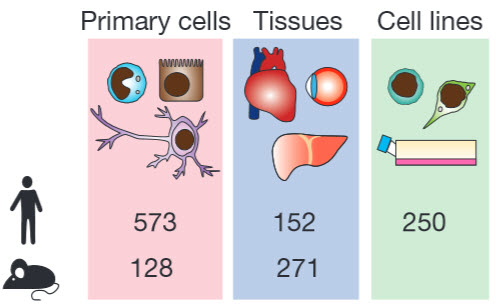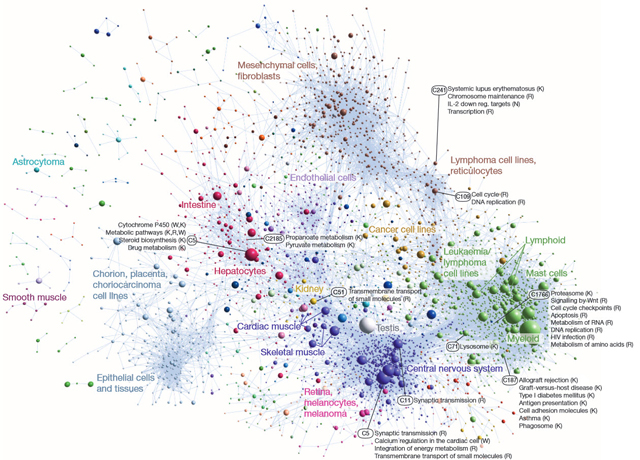First comprehensive atlas of human gene activity released
March 28, 2014
[+]

Samples profiled in FANTOM5 (credit: Alistair R. R. Forrest et al./Nature)
A large international consortium of researchers has produced the first comprehensive, detailed map of the way genes work across the major cells and tissues of the human body. The findings describe the complex networks that govern gene activity, and the new information could play a crucial role in identifying the genes involved with disease.
“Now, for the first time, we are able to pinpoint the regions of the genome that can be active in a disease and in normal activity, whether it’s in a brain cell, the skin, in blood stem cells or in hair follicles,” said Winston Hide, associate professor of bioinformatics and computational biology at Harvard School of Public Health (HSPH) and one of the core authors of the main paper in Nature.
“This is a major advance that will greatly increase our ability to understand the causes of disease across the body.”
The research is outlined in a series of papers published March 27, 2014, two in the journal Nature and 16 in other scholarly journals. The work is the result of years of concerted effort among 250 experts from more than 20 countries as part of FANTOM 5 (Functional Annotation of the Mammalian Genome). The FANTOM project, led by the Japanese institution RIKEN, is aimed at building a complete library of human genes.
[+]

Coexpression clustering of human promoters in FANTOM, showing a portion of a network derived from 4,882 coexpression groups. (Click twice for high-res view.) (Credit: Alistair R. R. Forrest et al./Nature)
No comments:
Post a Comment